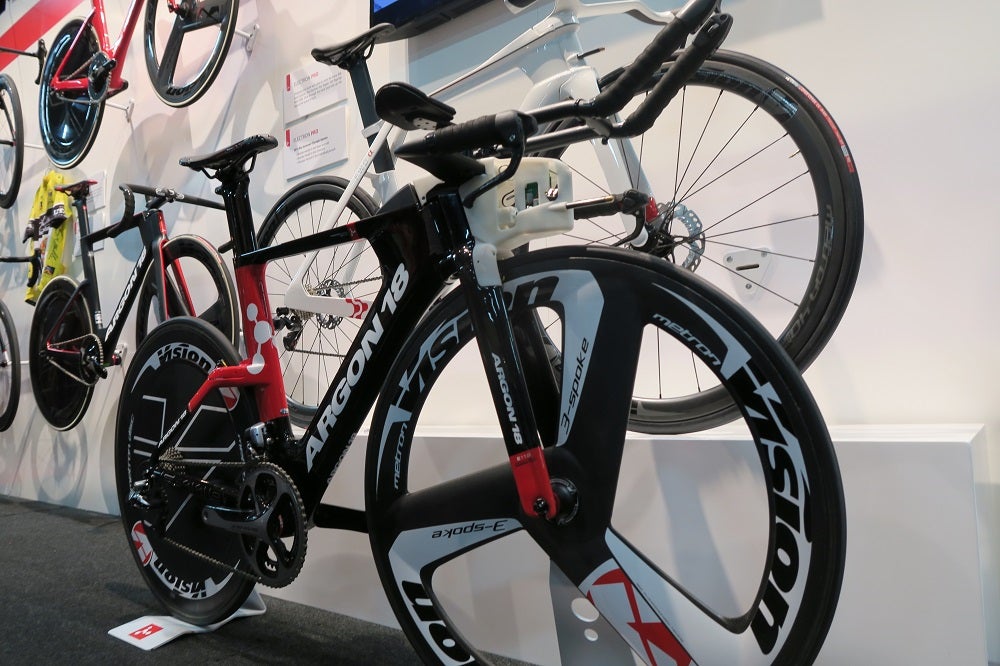Argon 18's Game-Changing Aero Concept Isn’t A Bike

If the bike company’s vision comes to life, triathletes are going to be drooling over nose cones
Canadian bike company Argon 18 stunned the cycling world when it debuted its aero concept bike in August. Dubbed the Smart Bike, it’s laden with 22 sensors that pull data from the bike itself, the rider, and the environment to display a real-time drag reading. But the Smart Bike isn’t the only forward-thinking thing Argon 18 has up its sleeve. The company revealed at Interbike that its nose cone could be fastened to any bike and also give real-time drag readings. It’s a potentially game-changing piece of equipment for triathletes.
Those drag readings come in the form of a number called CdA. Argon 18 techies describe CdA as the size of your parachute or the amount of drag created by athlete and bike. And a holistic approach to reducing drag, says Argon 18’s brain trust, is the new frontier in improving performance.
The value of drag ranges from zero to 1.0. The average athlete creates .32 CdA, pro triathletes about .23. If a rider can reduce drag by 10 percent, flat 40k TT times improve by at least two minutes.
The long term goal is to develop a head unit that interprets data and instructs the rider to lower their torso or pull in an elbow or make any number of adjustments to improve performance. It conceivably could tell a rider how hard to take a turn. That project is still on paper.
By Interbike 2018, Argon 18 would like to have its nose cone in the market. And even though it would lack the fancy algorithms and custom displays of the head unit, Argon 18 Product Strategist Michael McGinn says a rider could monitor drag on a Garmin. The athlete could apply CdA to answer equipment questions: is one helmet slicker than another? Is 100psi or 110psi faster? They could repeat courses and make body position adjustments to see if CdA goes down and speed goes up.
Improvements can be made off the bike too. Reducing drag by 10 percent could be as easy as a few downward dogs, since a more flexible rider is a more aero rider. McGinn says CdA may lead an athlete to a series of yoga classes.
Word of Argon 18’s drag measuring device has bike fitters dreaming big too. It’s one thing to set up bike position in a studio, it’s another to send that customer out on a ride and cross check adjustments made to saddle height or bar reach. Fitters have also told Argon 18 they see a world where aero profiles are created that address course conditions, profile and distance. An athlete could have one position dialed for Kona and another for Coeur d’Alene.
“The technology presents an insight to the rider,” McGinn says, “and the rider adapts.”